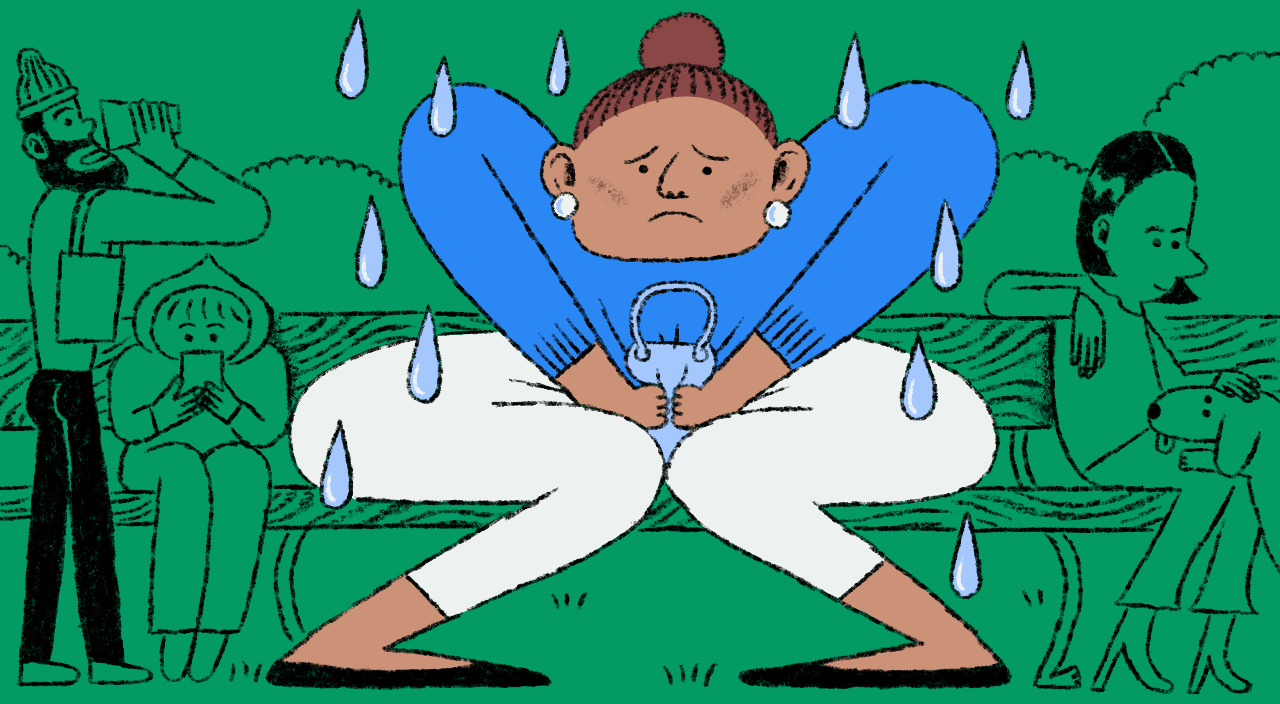Most days I feel young. And then I sneeze. After two births, a hysterectomy and perimenopause, my indoor plumbing isn’t what it used to be. Embarrassing memories of my mom frantically clenching her knees together — and declaring “I’m going to sneeze!” — make sense to me now. Bladder incontinence isn’t the most glamorous subject, but it is one that affects many women, regardless of age. (However, men are not exempt from this either.)
Childbirth, menopause, aging, constipation, chronic coughing, being overweight and chronic illnesses — such as multiple sclerosis, Parkinson’s disease and transverse myelitis — can wreak havoc on pelvic floors.
One day you’re running around without a care in the world and the next your Googling “Am I too young for Depends?” Have no fear. Here’s what the experts say women can do to help their leaky situation.
Also, any change in bowel behavior should always be discussed with your doctor to rule out any possible underlying health issues. However, urinary incontinence is extremely common.
“The two most common types of incontinence — stress urinary and urgency urinary — are usually not dangerous or detrimental to your health, but they can really impact your quality of life,” shares Rena Malik, M.D., assistant professor of surgery and director of female pelvic medicine and reconstructive surgery at the University of Maryland School of Medicine.
“Stress urinary incontinence is associated with activities that increase the pressure on the bladder — for example, coughing, sneezing and exercise,” Malik says.
If you are suffering from incontinence, high intensity exercises, such as squats or jumping, can aggravate the situation by putting pressure on your pelvis. Malik suggests switching to low-impact activities, like swimming or biking, that are beneficial because they are gentler on the pelvis.
“The go-to treatment for this is pelvic floor physical therapy or Kegel exercises — which can be done at home or with a supervised pelvic floor physical therapist. People who do [the exercises] with supervision tend to do better and learn how to do them more effectively. You do need to continue doing these regularly to see a continued benefit,” Malik says.
According to Harvard Medical School’s Harvard Health Publishing, the trickiest part of Kegel exercises is doing them right.
Pretend that you are trying to avoid passing gas or pretend to tighten your vagina around a tampon. To ensure you are accessing the correct set of muscles, experts recommend that you first attempt this while lying down, until you get the feel of contracting the pelvic floor muscles.
“It is so important to work on pelvic floor rehabilitation to strengthen those muscles,” especially after childbirth, says celebrity trainer Amanda Kloots, a former Rockette and a new mom (wife of Broadway star and COVID victim Nick Cordero), who often teaches classes to pregnant and post-baby mothers. “Slow and steady wins the race with your pelvic floor, so take your time, be consistent and do the exercises every day!”
Kloots also recommends seeking a specialist if you require extra care. The bonus in keeping pelvic floor and vaginal muscles strong is heightened arousal and more intense orgasms. A silver lining!
Meanwhile, “urgency urinary incontinence is associated with an urge or a sudden strong desire to urinate that is difficult to delay,” says Malik, who recommends moderating fluid intake. “You do need 64 ounces of fluid a day, but that includes the fluid you drink with meals.”
Since fruits and vegetables contain water, Malik usually recommends people sip on a 16-ounce bottle of water through the day and drink whatever they prefer with meals.
“Avoid caffeine, alcohol, spicy foods, acidic foods or artificial sweeteners — these make the bladder lining more sensitive and cause more urgency,” Malik adds. “Managing constipation, maintaining a healthy weight and stopping smoking can aid as well. And pelvic floor physical therapy and bladder training can also help.”
If these don’t work — second-line treatments could include medications and, as a last resort, surgery. Your urologist can recommend the best path for you.
Not feeling fresh, dry and, dare I say, confident in your nether regions shouldn’t be something you need to worry about on a daily basis.
The Ethel is a great resource for older women. Consider supporting us by joining AARP or renewing your membership.

Min Heo





